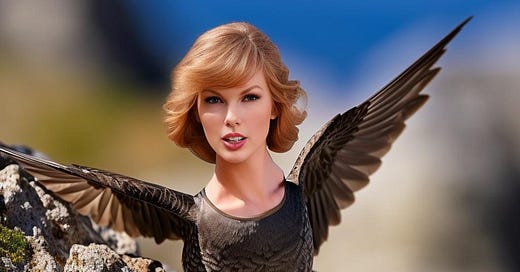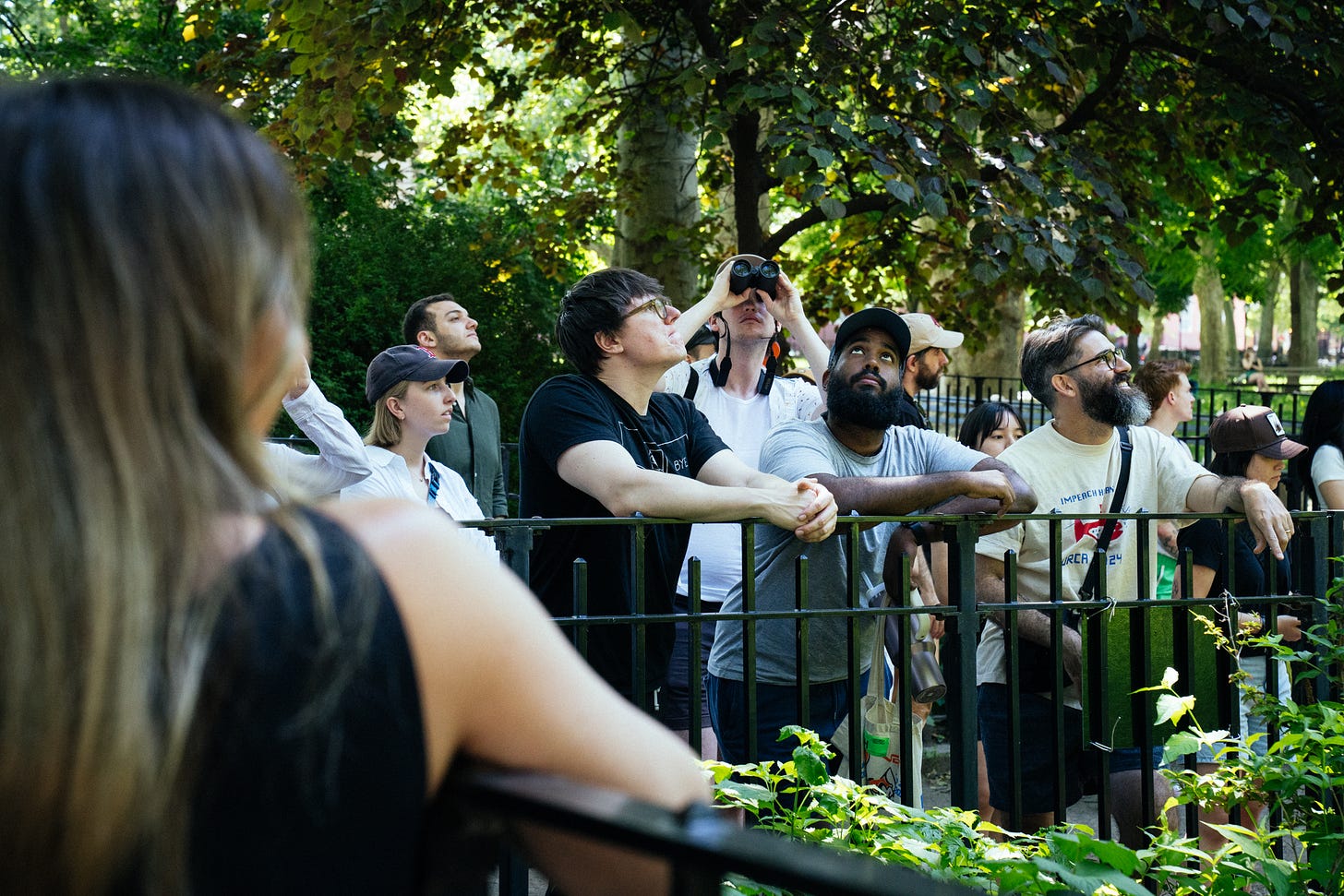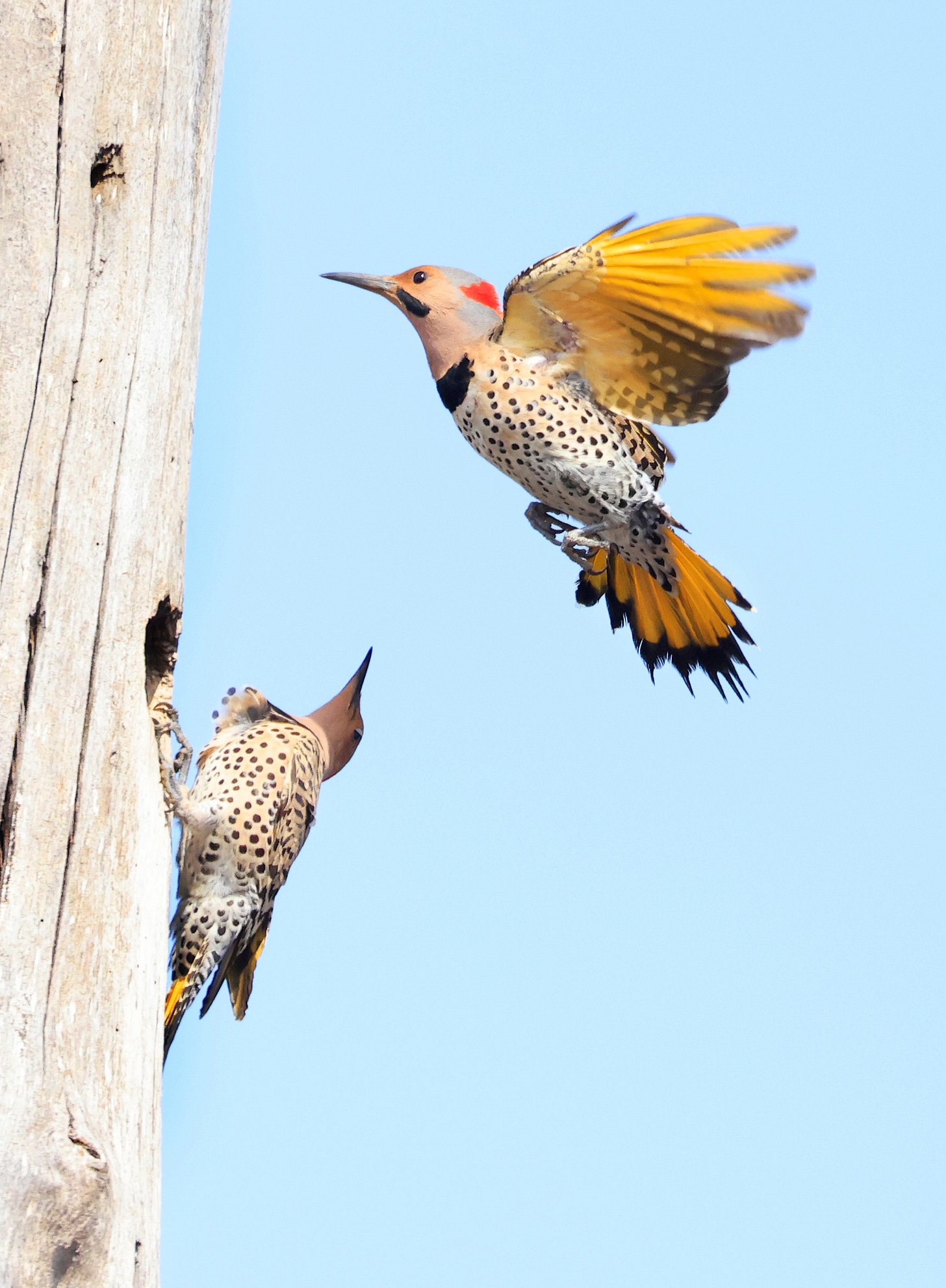Japanese Micro-Season Time. Unlike the slavish quarters of labor time made up by corporate humanoids, micro-seasons are straight from source, the great unity, the god-babe herself: 💚 Mama Nature 💚. Current J.M.S. (out of 72!): Safflowers bloom. As for McGolrick Park, perhaps New York City and even larger swathes of the eastern US, we notice—
MICRO-SEASONINGS
Serviceberries ripen • Common Grackles fledge • Mosquitos bite • Cedar Waxwings flock • Mourning Warbler visit • Oakleaf Hydrangeas • Virginia Spiderworts • Red-tailed Hawk returns • Warblers linger • Flycatchers visit
Spiderworts’s 3-petaled flowers appear and last for just a day! Entirely new ones appear the next day via what hort-heads call ”terminal clusters”
Flycatchers were the uncommon-in-NYC Acadian and Yellow-bellied. We wrote about how hard these babes are to differentiate from one another here
Our lingering warblers were the Nashville, Magnolia, and Black-and-white
Best way to notice fledglings? Watch for noisy, gray-ish birds following similarly shaped, not gray-ish, larger ones
Did we miss anything? We’ll declare this micro-season’s “official” name at year’s end.
JUNE 1, 2024 — SATURDAY
Conditions: Hot-ot-ot • Attendance: 107 • Vibrations: Social
Saturday birds: American Redstart · Cedar Waxwing · Chimney Swift · Common Grackle · Downy Woodpecker · Eastern Wood-Pewee · Laughing Gull · Magnolia Warbler · Nashville Warbler · Turkey Vulture · Yellow-bellied Flycatcher (rare) · Northern Cardinal (heard) · Blue Jay (heard) · Laughing Gull (flyover) … And the virtually always present in urban parks like McGolrick: Rock Pigeon, European Starling, American Robin, House Sparrow, Mourning Dove.
Pic of the day:
MICRO-LESSON: SWIFTS & SWALLOWS
Like some hot n’ heavy then abruptly-ending romance for which our bodies (mostly neck) are left sore—our lives: a chaos—spring migration has come and gone.
Below, in McGolrick park frequency data, where green is something like noticeability, warblers tell the story:
So… June is basically a wash in which we can return to our regularly scheduled lives and perhaps atone for whatever havoc our nascent bird-lust wreaked on obligations both friend and familial, right?
Wrong. Let’s stay on the look- and listen-out for swifts and swallows—among our favorite North American summer breakers.
Swifts and swallows, generally speaking, are not found in the US outside of summer!
Swifts—Swifts are known to hunt high in the sky. For McGolrick Park, and east of the Rockies, Chimney Swifts are the dudes. Gangs of ‘em circle high above parks, air-lurking, eating airborne bugs. They’ve been described as cigars with wings. They flutter and soar and swoop. They look a bit like bats. They make electric, twittery sounds. Just look up.



Out west, instead of Chimneys, you’ll find the White-throated Swifts. That’s basically the extent of US swifties.
Swallows—Swallows hunt insects close to the ground or over water. So if you’re near either of those features and notice a jet fighter-esque bird darting, circling or swooping to and fro (and low), you’re swallowing, pal. McGolrick’s lack of a water feature, plus its relatively small lawns, means swallows aren’t regulars. But they do occasionally fly over McGolrick Park. Probably on their way to Under the K Bridge and Penny Bridge Parks, where they regularly hunt Newtown Creek’s summer bugs.
There are 3 swallow species to know well:

Gray and white? Northern Rough-winged Swallow. Blue and white? Tree Swallow. Cinnamon, brown, red? Barn Swallow.
Done! Not so bad, right? When color is hard to determine due to light conditions and/or distance, check the shape. Barn Swallows, uniquely, have a forked tail:
Northern Rough-Winged and Tree Swallows both have stubby fantails. But even in bad light, their face to chin continuums are distinct, with Northern Rough-wings being grayish overall, and Trees high contrasting between an upper blue and lower white. Observe:



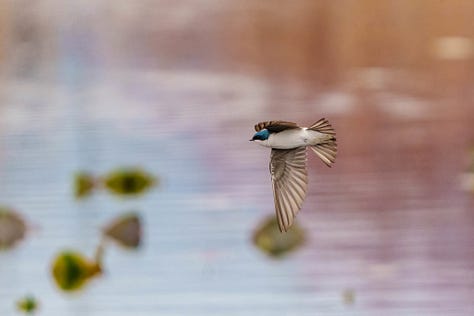
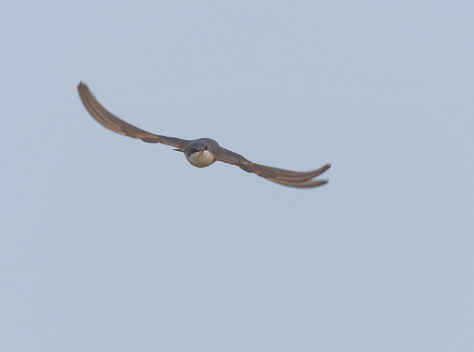
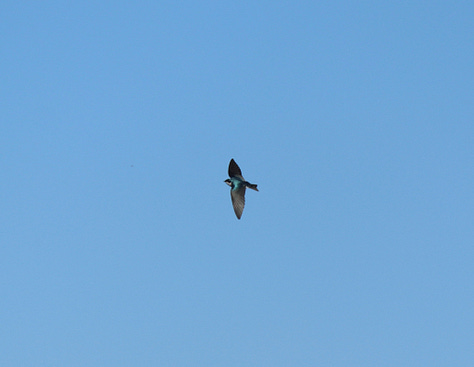
Cliff, Cave, the west’s beautiful Violet Green Swallow, and Bank Swallows are also worth knowing. But these species are typically less common than the above 3
Read more here about swifts and swallows here
Interesting fact from Audubon: “These avian aerialists—swifts and swallows—may look similar and exploit the same niche, but they’re not related at all. They only resemble each other because of convergent evolution, which means they’ve developed some of the same physical traits to adapt to their shared environment.”
ON NOTICE: NORTHERN FLICKERS (PLURAL)
It’s that time of year when Northern Flickers seek out nesting cavities—shoutout (and birdgodspeed) to last year’s McGolrick Park breeders 🤞👹. Be on the listen-out for monkey calls, which mates can make to attract one another; on the lookout for the US’s second largest, Yayoi Kusama’d woody; plus sawdust-like debris shooting out of tree holes—how Northern Flickers tidy up before laying eggs.
UPDATES, ANNOUNCEMENTS, REQS
Shoutout Julia “Grackington” Scinto for Egg-Breaking Nestling News:
- Red-tailed Hawk fuzzies are right now noticeable in McCarren Park! Scan the track’s field lights for 2-3 bitty bodies among a stack of sticks
- Peregrine Falcon nestlings are right now noticeable at Under the K Bridge Park! Scan the bridge’s underside over Newtown Creek, especially towards the Queens side
We don’t identify as sciencey, but birds do make us sci-curious. Same? Experiment at one of these upcoming events
- Saturday, June 8th, 10:00am—The 8TH ANNUAL HORSESHOE CRAB FESTIVAL at Broad Channel American Park. This free event celebrates the ancient mating ritual of Horseshoe Crabs, "living dinosaurs" who visit NYC’s shores each year and, besides horse-shoein’ around, are a vital food source for migrating shorebirds like the endangered Red Knot
- Sunday, June 9 at 8:30am—If you’re looking for a hyper-local, longterm gardening opportunity, meet us at McCarren Park Demo Garden at 8:30AM. We’ll bird the garden and park, then circle back so Demo Gardeners can teach us how to get dirty
Make your voice heard
- Two new nightclubs want to open across from Bushwick Inlet Park, an important Greenpoint habitat. See how you can get involved here: bit.ly/nonightclubs. Email protectbip@gmail.com with questions/comments


